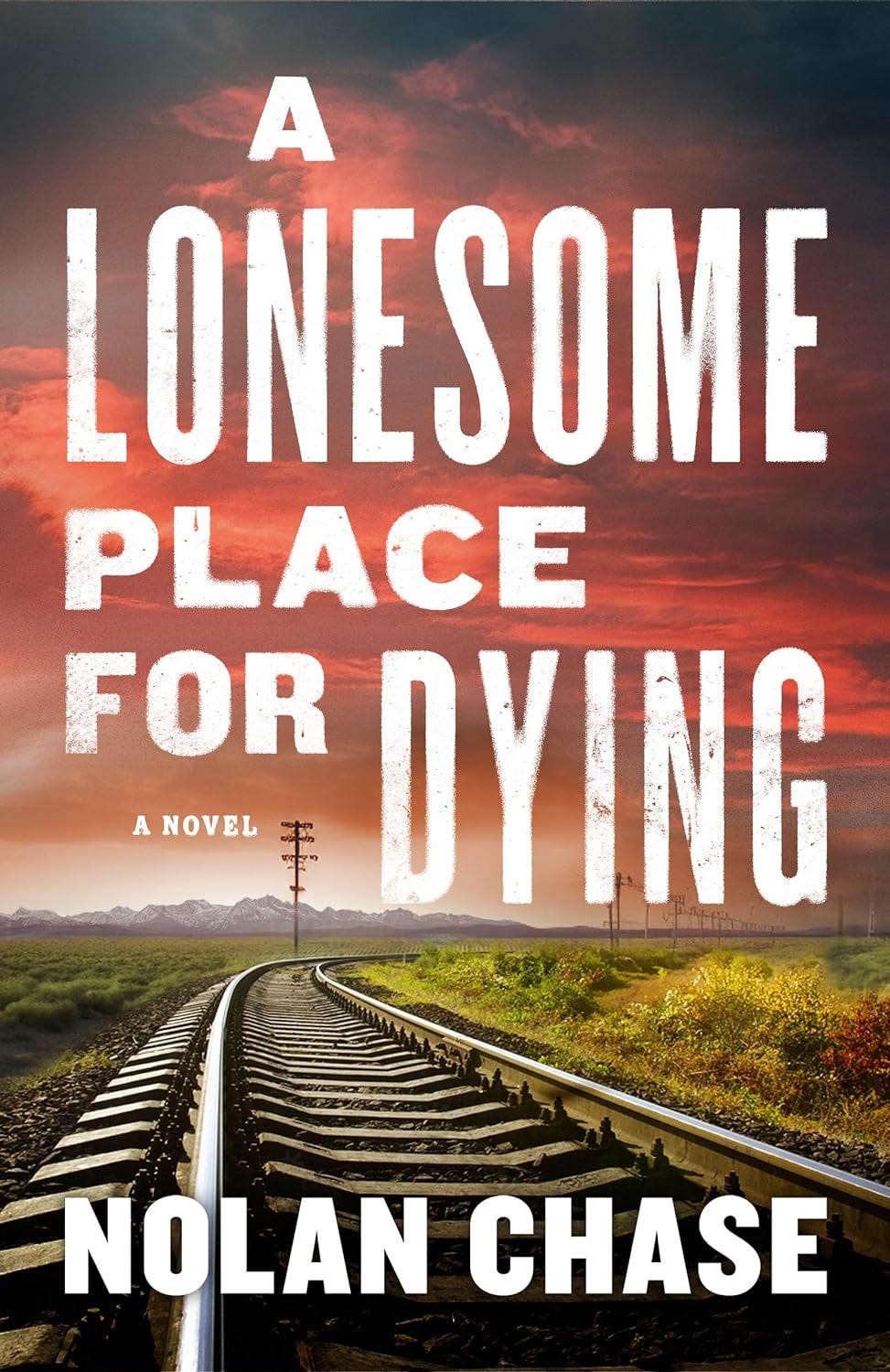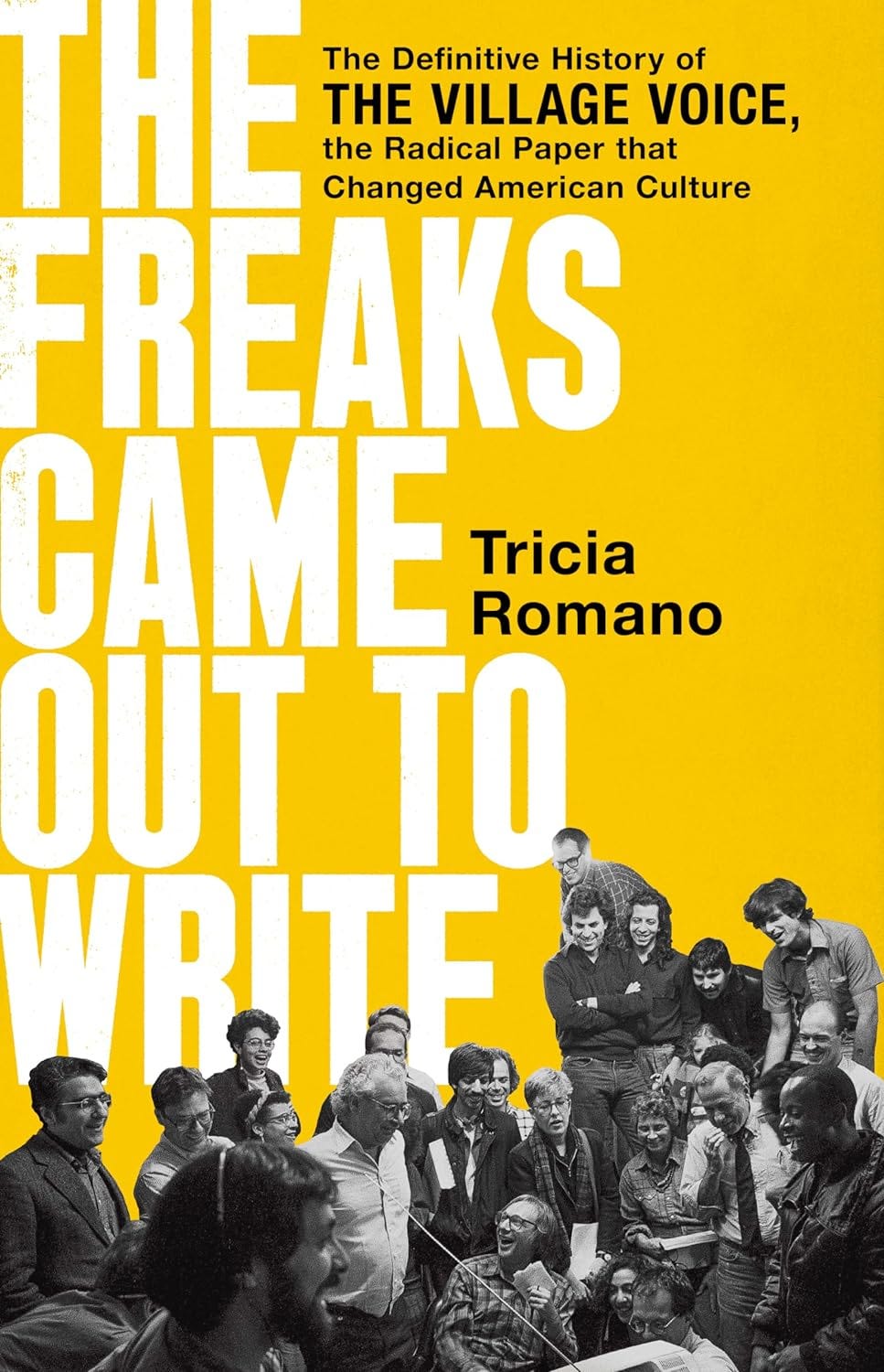C&C 45: Reading and Viewing Roundup
In books, Nolan Chase, Scarface, and a paper for New York’s dizzying pace
A Lonesome Place for Dying (2024), by Nolan Chase. You didn’t hear it from me, but word is Nolan Chase is actually Sam Wiebe, the finest scribe of Vancouver, BC’s mean streets. Chase works the other side of the border, specifically the town of Blaine, Washington, a hotbed of smuggling and other criminal activity. Ethan Brand, a misfit veteran of the war in Afghanistan who never intended to become a law enforcement officer, finds himself the new chief of police. On his first day, a body turns up alongside the railroad tracks leading to British Columbia, and that’s on top of a host of other problems, many of Ethan’s making. Sam—sorry, I mean, Chase weaves the threads together with skill, and infuses this procedural with a terrific sense of place.
The World Is Yours: The Story of Scarface (2024), by Glenn Kenny. An admission up front: I hate Scarface (1983). It’s always struck me as loud, dumb, and obvious. Worse, it’s the least interesting Brian De Palma movie. So it means something that I enjoyed this book. Credit Kenny’s thoroughness. He considers the original 1932 film as well as the remake’s broad cultural impact, and interviews damn near everyone involved with the movie with the exception of Al Pacino, for reasons beyond his control. I particularly relished his probe of the low-grade but intense rivalry between De Palma and fellow New York filmmaker Sidney Lumet in the early 1980s; Lumet swooped in on Prince of the City (1981) after De Palma and playwright David Rabe spent considerable time adapting Robert Daley’s book, then De Palma took on Scarface when Lumet’s take proved too political. There’s a strong chapter on Scarface’s spiritual sequels The Untouchables (1987) and Carlito’s Way (1993)—two De Palma films I adore—that includes a fantastic interview with nonagenarian judge/author Edwin Torres, whose novels provide the source material for Carlito’s Way as well as the underrated Q&A (1990), written and directed by … Lumet. I particularly enjoyed this passage when Kenny explains what is meant by De Palma pulling a “Sheridan Whiteside” and offers:
… a recommendation, which is that you go out and watch the 1942 movie The Man Who Came to Dinner, starring Monty Woolley, Bette Davis, Ann [Sheridan], Grant Mitchell, Billie Burke, and Jimmy Durante, names that alas grow more obscure in the fullness of time and the relentless erasure of “old” movies perpetrated by social media culture heroes, blah blah blah.
Sometimes you not only have to pick your battles, but how much ammo you’re willing to spend.
The Freaks Came Out to Write: The Definitive History of the Village Voice, the Radical Paper That Changed American Culture (2024), by Tricia Romano. I missed the peak Village Voice era. The alternative newspaper of my college years was the Boston Phoenix, which took its share of cues from the Voice. Romano’s essential chronicle opens with a roster of Voice contributors whom she interviews or quotes extensively, a list of luminaries including Hilton Als, Lester Bangs, Stanley Crouch, Manohla Dargis, Jules Feiffer, Nelson George, Molly Haskell, Gary Indiana, Greil Marcus, Vernon Reid, Peter Schjeldahl, Greg Tate (recently awarded a posthumous Pulitzer Prize), and Colson Whitehead. (Fun fact: Chris Rock wrote a few music reviews for the paper.) The dramatis personae comes in handy given the Voice’s long and contentious history, with some squabbles devolving into the petty airing of grievances; as editor Jack Newfield put it, working at the paper could feel “like a combination of high school and Bosnia.” Romano shrewdly structures the book using brief, punchy chapters that skip across subjects; if you’re not interested in the Voice’s sports coverage or the controversy surrounding performance artist Karen Finley, say, just wait a moment. Richard Goldstein, music critic and later executive editor, singled out the mélange of Voice voices:
I don’t think the culture could sustain anything like the Voice today because there is this great impatience for reading anything you disagree with. The people who wrote for the Voice would never be at the same party together.
It’s repeatedly stressed that classified advertising for apartment rentals and adult services kept the paper afloat, and the collapse of that market in the digital era scuppered the Voice’s chances. Contributor Laurie Stone still bemoans the decision to make the paper free.
It undermined the idea that this was something of value to pay for, to pay writers now. You don’t pay writers now because the culture has determined that intellectual contributions, aesthetic contributions are something that someone can do on the side, like a hobby. And see what happens to a culture who treats its artists and intellectuals that way? Not good.
Still, it’s astonishing to consider what those ads paid for. Essential exposure for pioneering hip hop artists. Groundbreaking coverage of the nascent AIDS epidemic. Reportage on Donald Trump and Rudolph Giuliani that has provided the foundation for numerous investigations since. Personally, I don’t think Craigslist was worth it. In his recent Politico essay on the crisis brought about by journalism’s swagger deficiency, Jack Shafer cites the disappearance of the alt weekly as a cause. Romano’s rollicking book reminds you of what we’ve lost.
What I’m Watching
Eileen (2023). I blinked and missed the theatrical run of this adaptation of Ottessa Moshfegh’s novel, and I’m happy I caught up with it. Thomasin McKenzie plays the title role, a sexually frustrated young woman adrift in her 1960s Massachusetts hometown, saddled with a dead-end job in a reform school. Then the institute’s glam new psychologist (Anne Hathaway) swans in like a fugitive from a Hitchcock film. Director William Oldroyd leans into the Hitch and Patricia Highsmith parallels. Shea Whigham offers his standard sterling support as Eileen’s alcoholic father, Marin Ireland feasts on her key scene, and SNL vet Siobahn Fallon Hogan scores as Eileen’s dyspeptic boss.
They Shot the Piano Player (2023). Fernando Trueba and Javier Mariscal (Chico and Rita) return with another animated feature, fascinating and confounding in equal measure. It’s a documentary about the politically-motivated 1976 disappearance of Francisco Tenório Jr., a force in Brazil’s bossa nova music scene. Jeff Goldblum, a jazz pianist himself, voices the fictional New Yorker writer digging into the mystery decades later. His editor suggests that he narrow his focus from bossa nova to Tenório Jr.’s fate, and while both stories are important, I couldn’t help wishing the film had moved in the opposite direction. Animation suits the broader canvas better, as in the scene of Ella Fitzgerald skipping her Rio encores to sit in with Brazilian musicians in other nightclubs. And the hand-drawn recreations of the French New Wave films whose popularity coincided with bossa nova’s rise unite their aesthetics in a way that the use of clips could not. The Tenório Jr. material, meanwhile, consists mainly of talking heads and would be better served by a more conventional approach. Still, there’s much to look at, listen to, and learn from here.
Where I’ve (Surprisingly) Been
Hello to the new subscribers who have come this way courtesy of Kottke.org. What was I doing at one of the OG blogs, you may well ask. I certainly did. As it happens, Cocktails and Crime received a much-welcomed plug from none other than Rex Parker, aka Michael Sharp, in the new feature Drawing Media by Edith Zimmerman. Not only that, my Substack welcome screen was rendered in one of Zimmerman’s gorgeous illustrations, a new high-water mark for C&C. I discovered Rex via his vintage paperback blog Pop Sensation. More importantly, Rosemarie knows him from visiting Rex Parker Does the NY Times Crossword Puzzle every single day after she does the New York Times crossword puzzle, and she is frankly stunned that Rex, aka Michael, has heard of me. It never hurts to impress your significant other. The interview is great, and I want that illustration on a T-shirt.




Thank you, Vince!